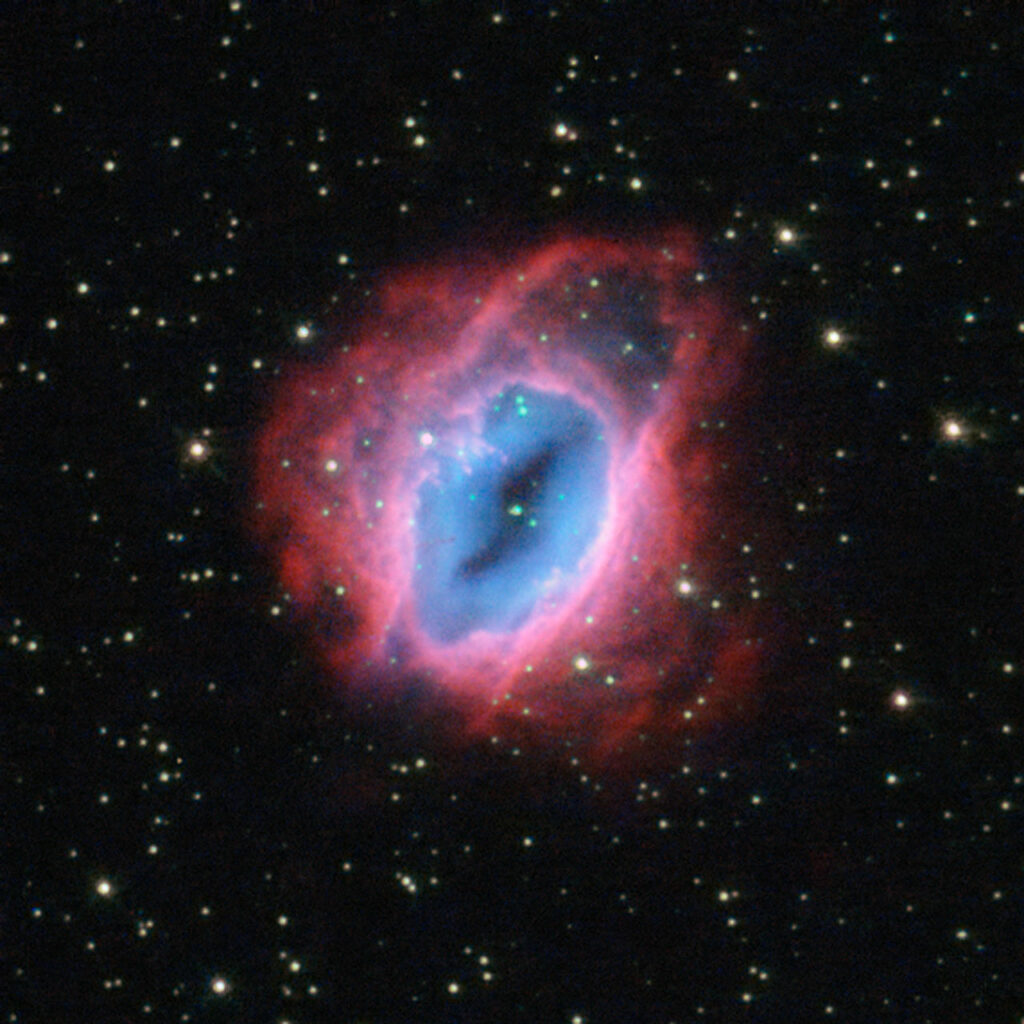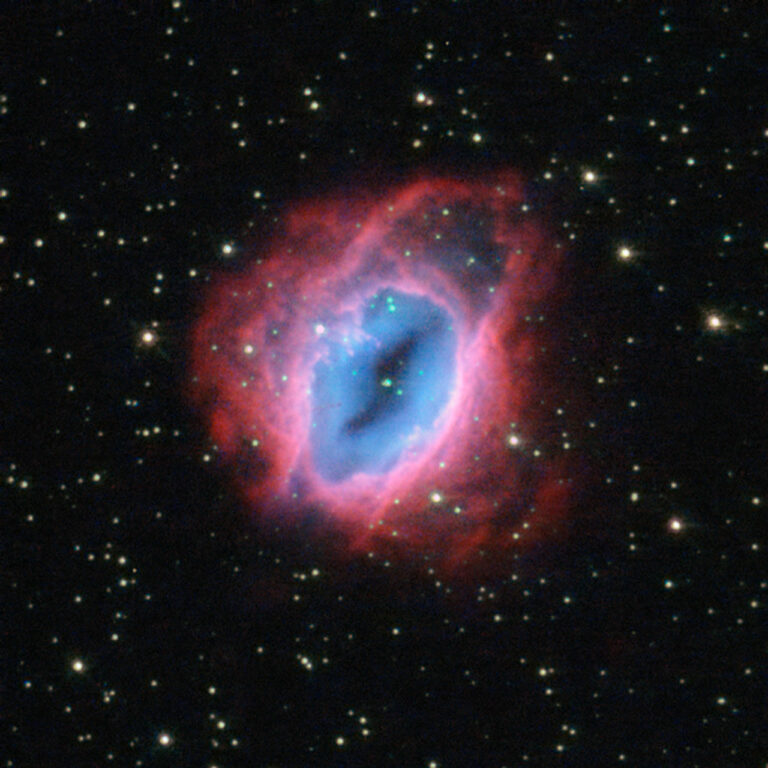Hubble Witnesses Luminous, Incandescent Gas Shells
ESO 456-67, a fiery swirl resembling something from “The Lord of the Rings,” is actually a planetary nebula. Located in the constellation of Sagittarius (The Archer), against a backdrop of bright stars, this rust-colored object captivates the southern sky.
Despite their name, planetary nebulae have no connection to planets. This misnomer originated over a century ago when early astronomers, equipped with small and low-quality telescopes, observed these ethereal objects. Due to their small, compact appearance, they were mistakenly labeled as planet-like.
When a star similar to our sun nears the end of its life, it expels material into space. Planetary nebulae are the intricate and luminous shells of dust and gas propelled outward from these dying stars. At their cores, one can find the remnants of the original stars themselves—small and dense white dwarf stars.

In the image of ESO 456-67, one can discern the different layers of material expelled by the central star. Each layer exhibits a distinct hue, ranging from red, orange, yellow, to green-tinted bands of gas. Clear patches of space can also be observed at the heart of the nebula. The formation of planetary nebulae and their diverse array of shapes and structures remains a mystery. Some appear spherical, others elliptical, while some eject material in waves from their polar regions. Additionally, there are those that resemble hourglasses, figures of eight, or even chaotic stellar explosions. The intricacies of their formation continue to intrigue scientists.
This article is republished from PhysORG under a Creative Commons license. Read the original article.
Do not forget to share your opinion with us to provide you with the best posts !




0 Comments